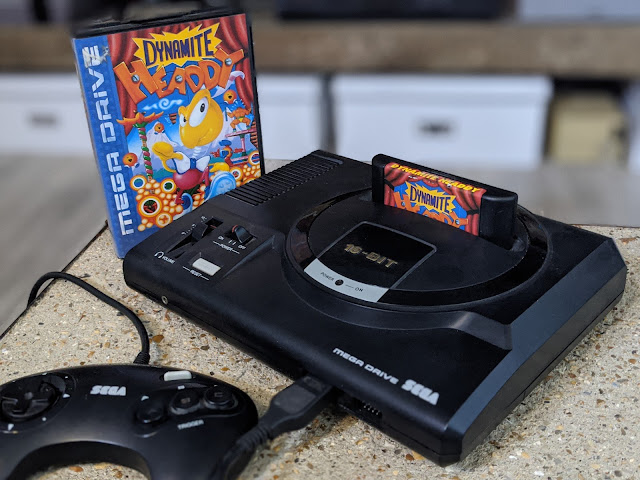It seems a little absurd to suggest that a game from Treasure; one of the most respected and well known developers of the 16 bit era, could be a ‘hidden gem’, but Dynamite Headdy, only the third game they made after the utterly magnificent Gunstar Heroes and the… rather less so… McDonald’s Treasure Land, is pretty much that.
Obviously this depends on your personal definition of ‘Hidden’ (the gem part is not up for debate) but to me most consoles have their mainstream, super well known titles, their ‘B’ titles that are less well known but not exactly obscure, and then there’s your hidden gems.
Dynamite headdy could arguably fall on the line between the second and third categories, but no more than that.
Which is a shame, really, as despite having all the brilliance of Treasure’s best games, it was largely ignored at launch and, in terms of popularity, has never quite recovered.
And the probably reason why is really annoying.
Maybe consumers were moving away from the classic 16 bit platform games at this time, but there’s also evidence to suggest that changes requested by publishers, and subsequently made for the American & European version of the game, can be held at least partially responsible for this failure.
There are several content changes, such as much less dialogue (cheaper than translating), some boss battles have been changed to robots from the original, more feminine, designs, and there are a host of smaller graphical changes.
I see these as ‘alternates’ rather than negatives or positives - but the same can’t be said for the difficulty level, which was increased by giving bosses more power, and removing the Japanese releases’ two ‘continues’.
I’m a little over half-way into the game at this point, and it’s already getting tough. It’s frustrating to know that these changes were made through the fear that players would complete the game after paying for only one weekend’s rental.
Nevertheless, Dynamite Headdy, even in the PAL European version I’ve been playing for a couple of hours, is a fantastic game - and one whose unbalanced, inflated, challenge can be somewhat negated through judicious use of the level select cheat. (Press start on the menu screen, then C - A - < - > - B).
Mr Headdy himself is a puppet of some description, and as such, the world you traverse is usually presented along the lines of a puppet show or Kabuki theatre. The background details really bring this to life, with tiny figures moving props, and fake scenery dotted throughout every screen. Your health is represented by a coloured spotlight, and there are posters on every surface.
This is further brought to life with Treasure’s incredible mastery of special effects on the Mega Drive. There are platforms that tilt towards the screen trying to tip you off, full-screen level flipping, and there’s a full stage that rotates as you climb a tower, bringing to mind Hewsons’ classic Nebulus (AKA Castelian).
This is a slower paced adventure than the Gunstar game (and many other titles in the Treasure catalogue). There’s no timer, and static levels encourage exploration and experimentation.
These are navigated, for the most part, in the usual running and jumping style, embellished by the use of the various Heads the protagonist can swap out at various points in each level.
The standard head can be thrown in any direction and used as a weapon, but it can also be used to attach to, and pull up onto, specific platforms.
The alternatives are collected from an NPC who wanders parts of the levels. With offerings that include triple fire, shields, or great strength, they serve more or less as power-ups.
There are other heads, however, that aid exploration and traversal: One shrinks the player substantially, another offers invulnerability, and there’s even one that lets you take a little nap to recover energy.
It’s these heads that make the game what it is. The levels are bright and well designed, the effects are phenomenal, and the bosses (of which there are many) are challenging and creative - but without the head-throwing, level grabbing, nap-taking, Rayman look-alike* protagonist it would all be part of a far less interesting game.
The variety and entertainment that switching your head brings to the gameplay is utterly original.
Some might see it as a shame to only find a great game more than quarter of a century after it’s initial release, but, to me, discovering a game this clever, this good, and, a quarter century later, still this unique - is borderline revelatory.
Dynamite Headdy - A genuine Treasure Classic in this form. To think the Japanese release could be even better is more than I can handle.
* Dynamite Headdy actually pre-dates the first Rayman title by over a year, so no plagiarism from Treasure... over to you, Mr Ancel!

No comments:
Post a Comment